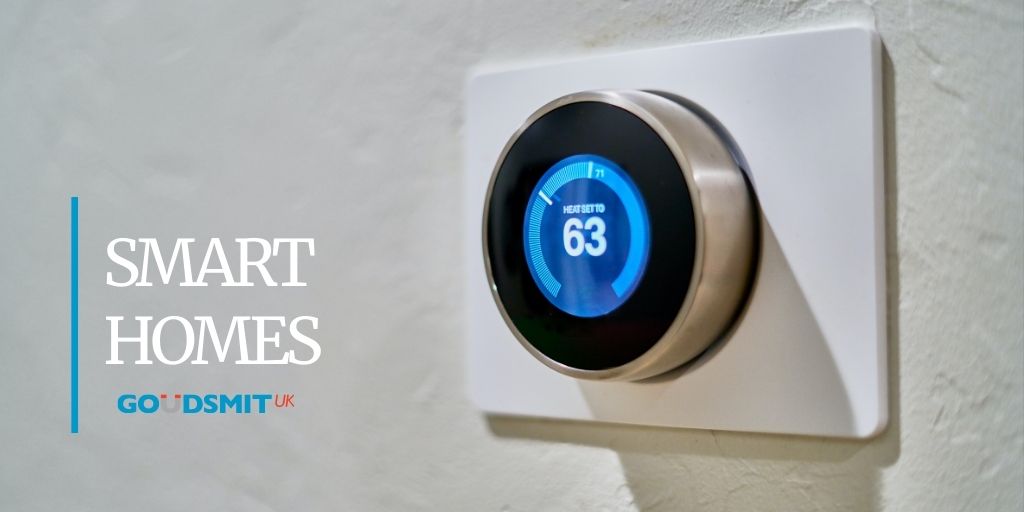A smart home refers to a home in which appliances and devices can be controlled remotely from anywhere with an internet connection, using a smart device such as a mobile. This is often used to control such aspects of the home including:
- Alarm system
- Temperature
- Lighting
How smart homes work
The devices in a smart home are all interconnected and can be accessed through a single central point, such as a smartphone or tablet. There are numerous devices that can be controlled through a home automation system, including:
- Door locks
- Televisions
- Speakers
- Thermostats
- Home monitors
- Cameras
- Lights
- Refrigerators
Once the system is installed, users can schedule when they want appliances to turn on and off at the click of a button. After a short period of time, smart home appliances will learn the homeowner’s schedules and adjust accordingly. Furthermore, some automation systems are enabled with lighting control enabling homeowners to reduce electricity use.
Home automation systems also alert the homeowner if a motion is detected in the home while they are away. These systems can be programmed to call the authorities in extreme situations.
The global home automation market is expected to grow as more people begin to adopt smart home technology. Video entertainment is expected to be the largest component of smart home technology, followed by home security and monitoring services. Smart speaker technology has already successfully penetrated the UK market, where roughly 31% of households use a device like the Amazon Echo or Google Nest.
Advantages of smart homes
The biggest benefits gained from having a smart home system is the convenience it provides homeowners. Instead of having different devices to control various appliances around the home, homeowners can control all through a single device.
Additionally, the system enables real time notifications and updates on issues in the home. For instance, smart doorbells allow homeowners to see and communicate with people who come to their doors when they are not at home. Users can also set and control the internal temperature, lighting, and appliances ahead of their arrival home.
Once the initial high cost of integrating the smart system, homeowners can benefit from significant cost savings. Appliances and electronics can be used more efficiently, lowering energy costs.
Disadvantages of smart homes
The greatest challenge of smart homes is security risks that comes alongside it. In some instances, these systems can be prone to hackers. However, this can be mitigated through a strong password, using encryption when available and only connecting trusted devices to your network. Additionally, the costs of installing smart technology into your home can be highly expensive.
Goudsmit UK
Contact our team on (+44) 02890 271 001 or email us at info@goudsmit.co.uk.







